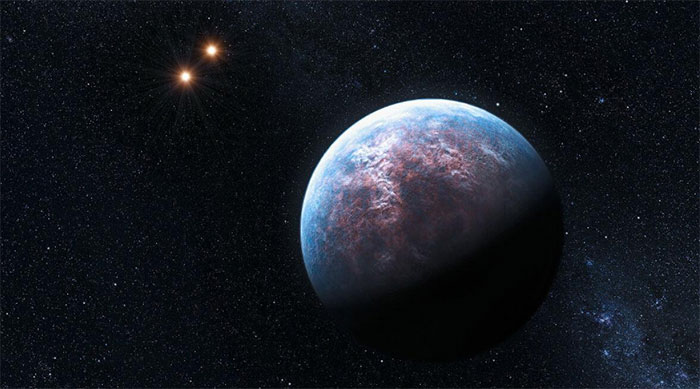Do the colors of the exoplanets reveal if they could be habitable?
A team of astronomers from Cornell University in the US has proposed a new way to find out if an exoplanet is habitable.
According to the team's new research, the novel approach will be based on the planet's surface color and light reflection .
"We have looked at the different planet surfaces in habitable areas at a distance from the Solar System that are supposed to affect the climate on exoplanets.
Light reflected on the surface of the planets plays an important role not only for the climate in general, but also for the Earth-like spectrum , " said Jack Madden, an astronomer and co-author of the study. help said.

This new method simplifies the search for habitable exoplanets.
During the study, astronomers examined the types of suns as well as the planet's surface and then devised an algorithm to calculate the climate based on the planet's surface and the light from the host star. it.
For example, if a rock planet is made of black basalt, it will absorb more light and thus have a hotter temperature. In contrast, a surface surrounded by clouds reflects more light, so the overall temperature of the planet will be cooler.
Astronomer Jack Madden explained: "Think about wearing a dark shirt on a hot summer day. You will heat up more, because the dark shirt doesn't reflect light, it retains heat. If you wear a light color, such as white, its high reflectivity reflects the light and your shirt keeps you cool. '
" Depending on the type of star and the primary color of the exoplanet, the planet's color may partially reduce the energy emitted by the star , " said researcher Lisa Kaltenegger.
This new approach is thought to simplify the search for habitable exoplanets. Researchers are currently waiting for the support of upcoming powerful devices such as the James Webb Space Telescope and the world's largest infrared and optical telescope called Extremely Large Telescope to allow the Astronomers check their predictions on climate and help find life in other corners of the universe.
- Discovered new exoplanets in habitable zone
- Discover 3 extremely rare extrasolar planets only 73 light-years from Earth
- Looking for life in the rainbow leg
- Identify 7 planets that can live
- Detected two 'super Earths' in habitable zones
- Detecting exoplanets based on relativity
- The 5 most freaky planets in the world have been revealed in the last year
- How does NASA telescope search for oxygen on exoplanets?
- Observe the world of aliens
- Look for strange signals from distant exoplanets
- Discover more than 700 planets outside the solar system
- Is there a 2nd Earth, only 31 light-years away?
 Van Allen's belt and evidence that the Apollo 11 mission to the Moon was myth
Van Allen's belt and evidence that the Apollo 11 mission to the Moon was myth The levels of civilization in the universe (Kardashev scale)
The levels of civilization in the universe (Kardashev scale) Today Mars, the sun and the Earth are aligned
Today Mars, the sun and the Earth are aligned The Amazon owner announced a secret plan to build a space base for thousands of people
The Amazon owner announced a secret plan to build a space base for thousands of people